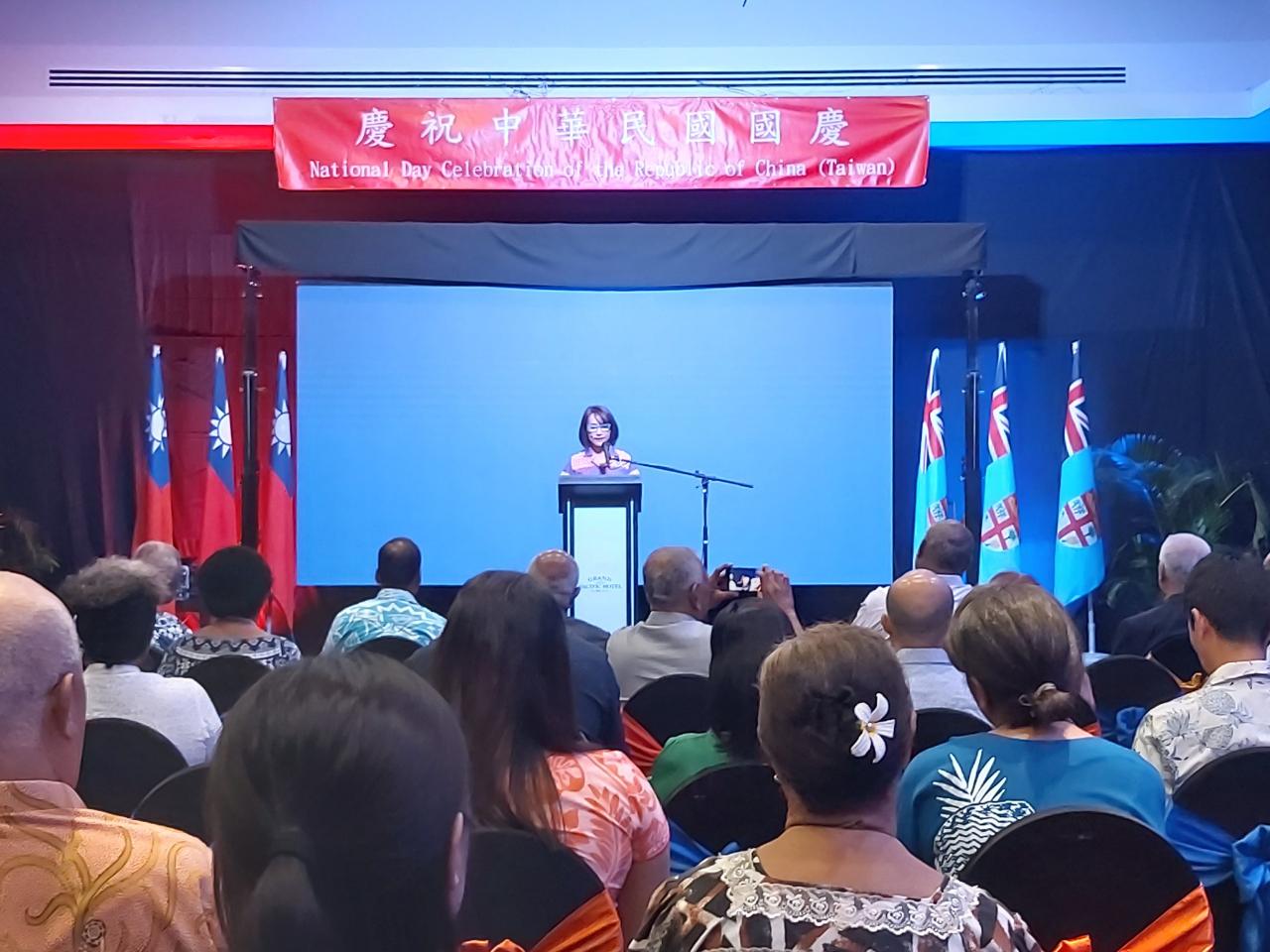
The 10th of October is a national day for both Fiji and Taiwan. For decades, Taipei’s trade office in Fiji has celebrated its event peacefully and respectfully with support from the host community in Suva. But not this year.
The Chinese embassy’s annoyance with the event became so personal and so physical that one Taiwanese diplomat ended the night in hospital with concussion. The Taiwanese office lodged a diplomatic protest with the Fijian foreign affairs ministry, which was met by a counter-complaint from the Chinese embassy to the Fijian police claiming violence to its staff.
There are many aspects to this story that deserve unpicking, but the two that attracted my attention were the time that elapsed before the incident became publicly known and the claims that it provides further evidence of China’s ‘wolf warrior’ diplomacy.
In prudent deference to its host, Taiwan typically celebrates its national day some days before the 10th in Fiji. This year’s Fiji Day was especially important because it marked the 50th anniversary of Fijian independence, so Taiwan National Day was held on the 8th at the luxurious Grand Pacific Hotel. Two Chinese officials reportedly attended the event and took photographs of Taiwanese delegates. They were apparently asked to leave by a Taiwanese official and allegedly later assaulted and seriously injured him.
Strangely, the fracas took some 10 days to be reported in the media—any media. The path to becoming something of a global media sensation began with an 18 October post by Graham Davis on his Grubsheet Feejee blogsite. It seems the mainstream media picked it up through David Robie’s ‘Asia Pacific Report’ and it then went across the Pacific and around the world.
Why this incident took so long to find its legs is a mystery. It was ignored by both of Fiji’s main newspapers until the story acquired world notoriety, and even then it was treated very gingerly. Clearly, there was little appetite for covering an occurrence that seemed too hot to handle.
It’s not clear that Taiwan’s Suva office wanted to court media attention, but that may have been due to a desire to give Fiji’s diplomatic channel the opportunity to protect its interest and provide appropriate redress. For its part, the Chinese embassy attempted to deny the affair’s diplomatic status by referring its side of the event to the police as a criminal matter.
Significantly, the counter-complaint did not become public until after the incident had achieved international notoriety. Police confirmed to Fiji Village reporter Vijay Narayan when he followed up the international story that they had opened an investigation into the Chinese embassy’s complaint. The next day it was reported that the Fiji Police Force had handballed the matter to the foreign affairs ministry, where it was reportedly resolved ‘amicably’ between the two parties.
So why did the matter come to light at all? Davis himself notes that the story was authenticated to him by ‘multiple diplomatic sources in Suva’ who were disturbed by the incident and the attempts to hush it up. There was concern that throwing a cloak of invisibility over such behaviour only emboldened Beijing’s increasingly aggressive approach to diplomacy and disrespect for host nation norms and laws.
My article on ‘kowtow diplomacy’ after the 2018 APEC in Port Moresby looked at the apparent cultural insensitivity of China’s diplomacy in the Pacific Islands region. My argument was that Chinese diplomats were less concerned with regional sensitivities than with the style and objectives of diplomacy that would win them favour in Beijing.
The Suva assault only reinforces my view. Despite conflicting details of how the affray unfolded, there was clearly a breakdown in the cautious professionalism of Chinese diplomats typical of earlier times.
Other recent assessments attribute this more aggressive diplomatic posture to a new culture within the ministry promoted by the Chinese Communist Party under direction from President Xi Jinping.
There was some social media commentary that sought to dismiss the incident at the Grand Pacific as an ‘insignificant’ (even before the amicable resolution). Such apologies fly in the face of the diplomatic sentiment in Suva that the incident deserved public ventilation.
The intimidatory actions that the Taiwanese officials found objectionable—photographing guests and seeking to record the presence of local notables—were not novel or unfamiliar. We have seen these tactics in Australia.
By filming Chinese students exercising their rights under Australian law to assemble and protest, among other surveillance activities, the representatives of the People’s Republic of China convey the clear message that people’s actions could be used against them here in Australia or against their families in China.
Even Australians of Chinese ancestry are loath to be seen near demonstrations protesting PRC actions or policies because of an expectation that such events will be recorded for possible retribution.
This provocative behaviour is unacceptable here and it’s clear to see why the Taiwanese trade office, after decades of peaceful national day celebrations, found PRC intimidation unacceptable in Fiji.
And embroiling Fiji in its dispute with Taiwan is scarcely improving China’s relations with the first country in the Pacific to host a Chinese embassy or easing tensions with the Chinese community in Fiji.
We have seen how the perception that the PRC and its agents are actively undermining national interests in Australia has cast unfounded slurs on the Australian Chinese community.
China has an important role to play in dealing with transnational crime and economic vandalism in the Pacific islands region. However, this requires trust that the PRC is an honest player that is respectful of the laws and norms of its hosts in the region.